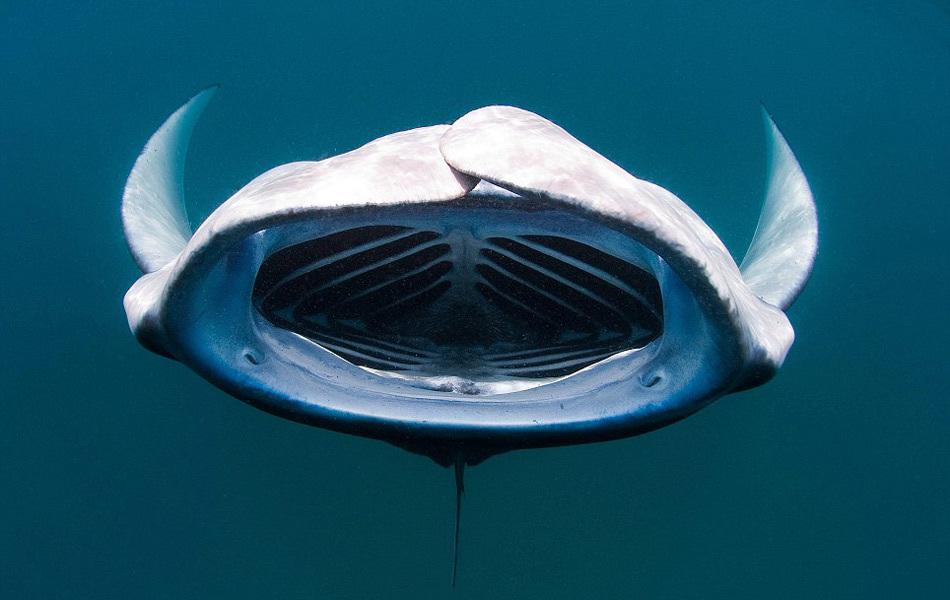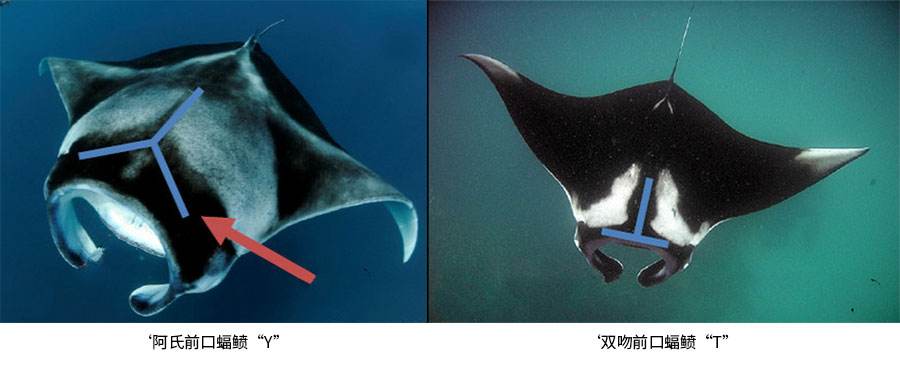
Alias Manta ray, coral reef manta ray, devil ray, flying bream, eagle bream
Family Myliobatiformes Myliobatidae Manta
Life It is estimated that its lifespan can reach 40 years (in the wild)
The appearance of the Aversonis manta ray is very similar to that of the birostris manta ray, and their distribution areas overlap, so they are often confused. But there are still some differences between the two. The black and white pattern on the back of the Aries manta is not clearly defined, so the black pattern on the head forms a "Y" shape, and the "Y"-shaped pattern extends all the way from the head to the center of the back. In addition, the tip of its pectoral fin may also appear white. The white pattern on the back of the birostris manta is like two symmetrical right-angled triangles, making the black pattern on the head form a "T" shape.

The swimming posture of the manta ray is very elegant. It flaps its triangular pectoral fins when swimming, just like flying in the water. They can also swim very fast, sometimes jumping out of the sea, making a loud bang when falling into the water, and sometimes accompanied by a beautiful somersault. Manta rays may jump out of the water to eliminate parasites on their bodies, they may be chased by enemies, they may communicate and interact with each other, or play.
There are often remoras attached to the manta ray, picking up food residues that fall from the manta ray's mouth. Manta rays will regularly visit the "cleaning station" to let the cleaning fish clean the parasites, dead skin or some inflamed tissues on their bodies.
Due to its huge size, slow movement and frequent appearance on the water surface, the manta ray is very easy to be caught. The threats to the manta ray also come from accidental capture in fishing nets, habitat reduction, environmental pollution and interference from human diving activities. Compared with oceanic manta rays, the near-shore manta ray is more vulnerable to threats due to the impact of human activities. It is also hunted for various reasons, such as the commercial value of cod liver oil and leather, and its gill rakers can be used in traditional Chinese medicine.
It is listed as vulnerable in the Red List of Endangered Species of the World Conservation Union (IUCN Red List).
It is listed in Appendix II of the Convention on International Trade in Endangered Species of Wild Fauna and Flora (CITES).
The United States, Maldives, the Philippines and Australia have all formulated relevant regulations and protection measures for manta rays to protect the population.
Protect wild animals and eliminate game.
Maintaining ecological balance is everyone's responsibility!